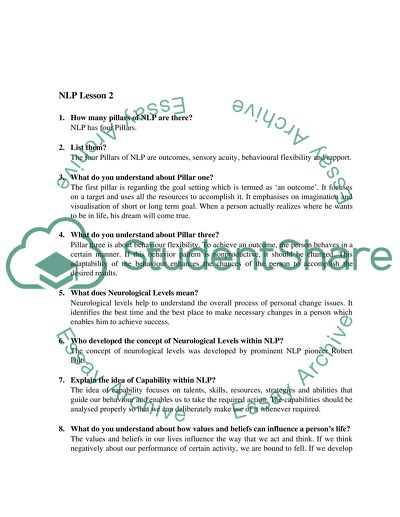Cite this document
(“HYPNOTHERAPY & NEURO LINGUISTIC PROGRAMMING Essay”, n.d.)
HYPNOTHERAPY & NEURO LINGUISTIC PROGRAMMING Essay. Retrieved from https://studentshare.org/miscellaneous/1547578-hypnotherapy-neuro-linguistic-programming
HYPNOTHERAPY & NEURO LINGUISTIC PROGRAMMING Essay. Retrieved from https://studentshare.org/miscellaneous/1547578-hypnotherapy-neuro-linguistic-programming
(HYPNOTHERAPY & NEURO LINGUISTIC PROGRAMMING Essay)
HYPNOTHERAPY & NEURO LINGUISTIC PROGRAMMING Essay. https://studentshare.org/miscellaneous/1547578-hypnotherapy-neuro-linguistic-programming.
HYPNOTHERAPY & NEURO LINGUISTIC PROGRAMMING Essay. https://studentshare.org/miscellaneous/1547578-hypnotherapy-neuro-linguistic-programming.
“HYPNOTHERAPY & NEURO LINGUISTIC PROGRAMMING Essay”, n.d. https://studentshare.org/miscellaneous/1547578-hypnotherapy-neuro-linguistic-programming.


